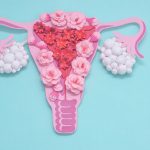Effects of Falls in the Elderly
Protocols to prevent devastating falls
Holly Lucille, ND, RN
As an ND, one of the principles guiding my scope of practice and thought process is that of “Prevention is the cure.” It is somewhat of a backdrop principle, always present, very subtle, yet difficult to quantify in any research that attempts to substantiate comprehensive practices. There is a wonderful quote from Maya Angelou that lingers in my mind in the same manner as prevention: “When we know better, we do better.”
As I work with elderly patients in my practice regarding other health issues, such as fatigue, arthritis, and cardiovascular disease, my “I know better” principle springs into action, reminding me to consider what opportunities exist for practicing prevention, especially when it comes to their potential risk of falling. According to the Centers for Disease Control and Prevention, each year 1 in every 3 adults 65 years or older falls, but less than half talk to their healthcare providers about it.1,2 So, while it may not seem the most obvious subject to bring up, I believe it is crucial because injuries from falls have the potential to permanently alter a patient’s quality of life, making it hard to get around and live independently and even increasing the risk of early death.
The Downward Spiral of Falls
Every year, more than 1.6 million older US adults go to emergency departments for fall-related injuries.3 Among older adults, falls are the number one cause of fractures, hospital admissions for trauma, loss of independence, and injury deaths.3 It is likely that the problem is only going to get worse as the number of elderly people and their mean age continue to increase. According to the Administration on Aging,4 there were 39.6 million adults 65 years or older in 2009; this number is expected to jump to 72.1 million by 2030. The oldest old population (individuals ≥85 years) grew from 100 000 in 1900 to 5.7 million in 2008. In fact, the oldest old are projected to be the fastest growing part of the elderly population.5
About 70% of fall-induced injuries sustained are bone fractures, with fractures of the hip bone being the most common, the most devastating, and the most costly.6 One-fourth of those who fracture a hip will die within the first 12 months following the injury. In elderly patients who survive a hip fracture, up to half of them will not be able to return to their prefracture level of function and often require long-term nursing care.7
Regardless of whether or not an injury occurs, once a patient has experienced a fall, it can often spur the start of a downward spiral. The individual begins to fear falling, resulting in decreased activity and loss of strength and mobility, which then leads to an increased risk of falling again.
Prevention Protocol for Breaking the Fall
While a patient may think otherwise, falls and accidents seldom “just happen.” Evaluation of the patient should include a focused history with an emphasis on medications and a physical examination, including tests of postural control and overall physical function. Bone density is another critical clinical piece to consider.
Treatment can then be directed at the underlying causes of the fall, which may include osteoporosis, cardiac and neurological diseases, medication use, sensory deficits, and environmental factors (poor lighting, loose rugs, footwear, etc). While it is debatable whether brittle bones break as a result of a fall or break when stressed and in turn cause a fall, in either event a decrease in bone density is a major contributor to falls and resultant injuries.
Optimizing flexibility, balance, and bone strength and density is the first line of defense against falls and fractures. Encouraging patients to participate in regular daily physical activity will help to strengthen muscles, increase flexibility, and improve balance. Weight-bearing exercise will also enhance overall strength and will slow bone loss. Proper dietary choices, gastric acid pH, and optimal nutrient supplementation are crucial to supporting bone health and helping decrease a patient’s risk of falling. Most bone formulas focus on calcium and magnesium. However, herein I will describe the use of less common but highly important nutrients to consider incorporating into a patient’s bone-building regimen. These include silica, strontium, and a curcumin-Boswellia blend.
Silica
Provided in the right form, silica can be a valuable tool for stabilizing osteoporosis and osteopenia and for helping with other bone health issues as well. In fact, silica (not calcium) is the top osteoporosis supplement in certain parts of Europe. Silica, a critical trace mineral, is found in high concentrations in arteries, tendons, skin, nail, ligaments, teeth, hair, connective tissue, and collagen. It helps increase bone collagen and strengthens the connective tissue matrix. I prefer using an organic source of silica obtained from the aboveground parts of the Equisetum arvense plant. A specialized process ensures that the silica is extracted still attached to the plant bioflavonoids that support its activity in the body. At the same time, all the insoluble parts that are abrasive and harmful are filtered out. This unique botanical silica is then blended with a specific marine oil to enhance absorption, beneficial effects, and cell membrane penetration of the active compounds. This form of silica is extremely soluble and virtually 100% bioavailable for the body. I recommend 10 to 20 mg of silica once a day for general support and 40 to 60 mg/d for 4 to 8 weeks in cases where acute intervention is needed.
Strontium
The trace element strontium can have a tremendous effect in optimizing bone strength and density. Strontium is a component of bones and occurs naturally in the body. Investigations using strontium in the treatment of osteoporosis have shown significant improvements in bone mineral density. A 2010 study8 published in Rheumatology International compared the effects of strontium with those of the well-known osteoporosis drug alendronate. In this study of women with osteoporosis, strontium was much more effective than alendronate in increasing bone thickness and density, without serious adverse effects. The only concern when using strontium is that it should be taken separated by at least 2 hours from calcium supplements because both use the same pathway in the body. I usually prescribe 340 mg of strontium citrate once a day for moderate concerns or twice daily in patients needing more immediate support.
Curcumin-Boswellia Blend
Supplementing with a blend of curcumin (Curcuma longa) and Boswellia serrata can combat joint stiffness that tends to impede balance and mobility by reducing inflammation and increasing joint flexibility. However, curcumin is hard to absorb. You need to look for clinically studied curcumin that has shown (in human trials) absorption up to 10 times that of plain curcumin and a minimum 8-hour serum level duration to have significant effects.9 I also use a purified Boswellia that is screened for beta-boswellic acid because this has been shown to be a proinflammatory compound. Beta-boswellic acid should be reduced to less than 5% in medicinal Boswellia. I recommend dosing this blend twice daily to maintain optimal serum levels.
In addition, curcumin has been shown to enhance bone mineral density and bone microarchitecture in animal models of osteoporosis.10 This makes sense because systemic chronic inflammation contributes to osteoporosis via several pathways, including a profound disruption of osteoclast-osteoblast balance.
Curcumin and Boswellia have also recently been shown to inhibit inflammation and reduce pain in a human osteoarthritis study,11 with effects equal to or surpassing those of celecoxib. Utilizing pain and inflammation control via natural medicines that do not contribute to further bone erosion has the indirect effect of reducing osteoporotic fractures. It is important to remember that bone health, strength, and balance will not improve without exercise and movement, and patients may not be inclined to exercise and movement if pain is their reward for the same. Therefore, I start my patients on high-absorption curcumin and low–beta-boswellic acid Boswellia several days before they commence their exercise program. For people with severe pain that limits movement, I prescribe supervised exercise in warm-water pools.
Summary
Last year, my mother who is only 72, fell and broke her hip. I have seen the devastation of her decreased independence, quality of life, and self-esteem following this incident. This experience, the statistics of the aging population, and the increase in morbidity and mortality due to falls are my constant guideposts for practicing prevention in this area. Awareness, education, and proper preventive supplementation for the risk of falls are key as we care for all elderly patients, no matter what reason they present to our clinic.
 Holly Lucille, ND, RN, a graduate of Southwest College of Naturopathic Medicine, Tempe, Arizona, is a naturopathic physician, author, and educator. She spearheaded the effort to have NDs licensed in California. Her practice in Los Angeles is Healing from Within Healthcare. She serves on board of directors of the American Association of Naturopathic Physicians. In 2007, she was listed in Time Magazine’s Alt TIME 100 Most Influential People.
Holly Lucille, ND, RN, a graduate of Southwest College of Naturopathic Medicine, Tempe, Arizona, is a naturopathic physician, author, and educator. She spearheaded the effort to have NDs licensed in California. Her practice in Los Angeles is Healing from Within Healthcare. She serves on board of directors of the American Association of Naturopathic Physicians. In 2007, she was listed in Time Magazine’s Alt TIME 100 Most Influential People.
References
Al-Ama T. Falls in the elderly: spectrum and prevention. Can Fam Physician. 2011;57:771-776.
Centers for Disease Control and Prevention. Falls among older adults: an overview. http://www.cdc.gov/HomeandRecreationalSafety/Falls/adultfalls.html. Accessed November 7, 2011.
National Institute on Aging. NIH senior health. http://nihseniorhealth.gov/falls/aboutfalls/02.html. Accessed November 8, 2011.
Administration on Aging. Aging statistics. http://www.aoa.gov/AoARoot/Aging_Statistics/index.aspx. Accessed November 9, 2011.
Population Resource Center. The aging of America. http://prcdc.org/300million/The_Aging_of_America/. Accessed November 9, 2011.
Kannus P, Khan KM. Prevention of falls and subsequent injuries in elderly people: a long way to go in both research and practice. CMAJ. 2001;165:587-588.
Steinweg KK. The changing approach to falls in the elderly [published correction appears in Am Fam Physician. 2008;77:1505]. Am Fam Physician. 1997;56:1815-1824.
Rizzoli R, Laroche M, Krieg MA, et al. Strontium ranelate and alendronate have differing effects on distal tibia bone microstructure in women with osteoporosis. Rheumatol Int. 2010;30:1341-1348.
Antony B, Merina B, Iyer VS, et al. A pilot cross-over study to evaluate human oral bioavailability of BCM-95 CG (Biocurcumax) a novel bioenhanced preparation of curcumin. Indian J Pharm Sci. 2008;70:445-449.
Poeckel D, Tausch L, Altmann K, et al. Induction of central signalling pathways and select functional effects in human platelets by beta-boswellic acid. Br J Pharmacol. 2005;146:514-526.
Yang MW, Wang TH, Yan PP, et al. Curcumin improves bone microarchitecture and enhances mineral density in APP/PS1 transgenic mice. Phytomedicine. 2011;18:205-213.










